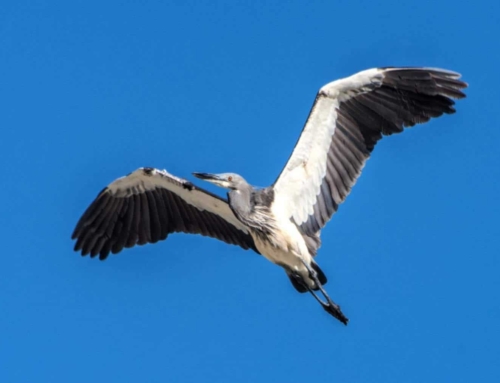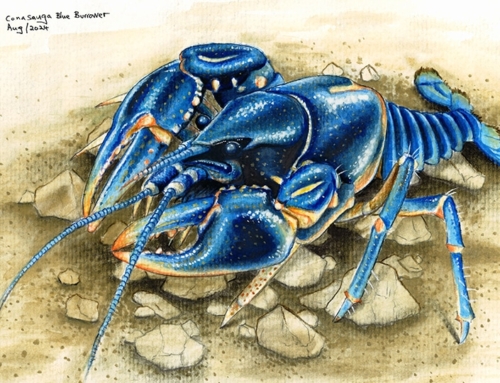The Philippine Crocodile is one of the rarest and most endangered crocodiles in the world. Once found throughout the Philippines, in 2001 there were only 12 known individuals left in the wild due to habitat loss, pollution and overfishing. However, local people have pulled together to support a strong comeback for their crocodiles, and it is now estimated that there are around 250 in the wild.
At the heart of this recovery effort is Synchronicity Earth’s partner, the Mabuwaya Foundation. Our Conservation Research Analyst Anna Heath recently visited the organisation in the Isabela province of Luzon, Philippines, and here she shares their stories of rehabilitating this Critically Endangered species.
Dunoy Lake
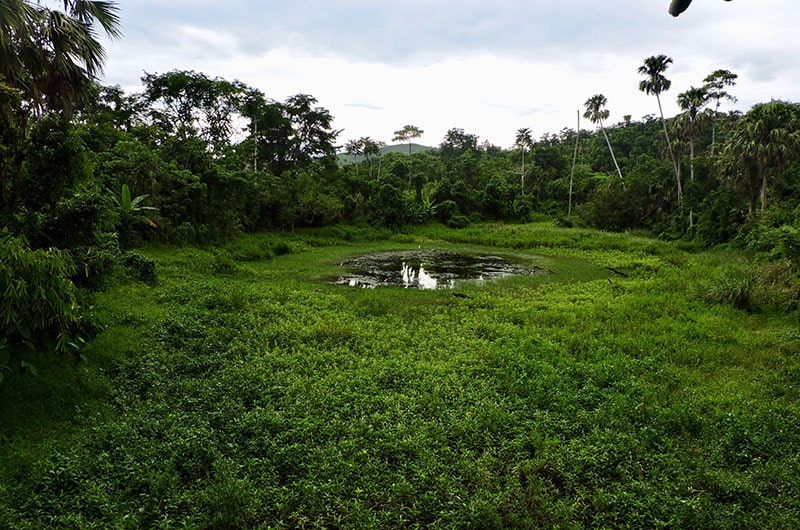
Dunoy Lake is one of the only places in the world you can see the Philippine Crocodile in the wild. I took this photo from an observation tower overlooking the lake that the Mabuwaya Foundation built to monitor the crocodile populations. As I sat up there with the team, Marites Gatan Balbas, the Director of Mabuwaya, told me that when they started working there, the area was being heavily logged. This land had once been barren rice paddies, but now it is one of their most longstanding crocodile sanctuaries. It took Mabuwaya over a decade of working slowly with the communities around the park to convince them to stop logging and farming in the area.
As we listened to the late evening bird song, Marites whispered,
“Before you could just hear chainsaws, now you can hear this.”
A community for crocodiles
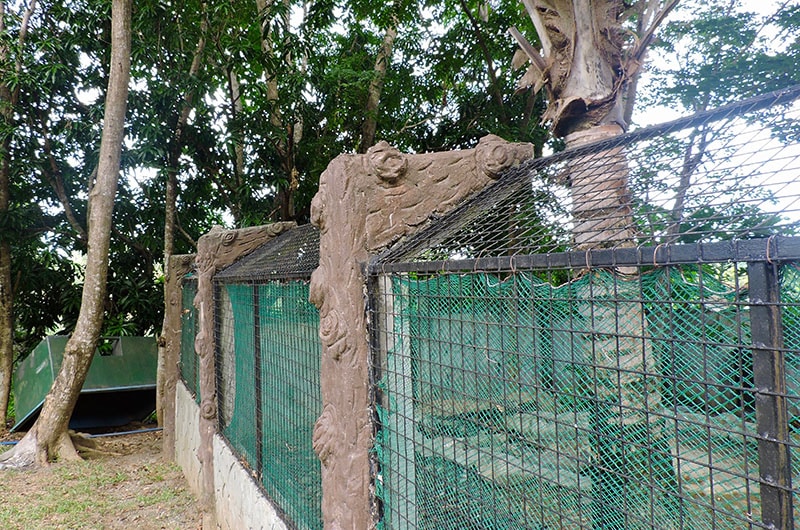
Mabuwaya focuses much of its work on changing community mindsets towards crocodiles. While many people used to be afraid of crocodiles and they would be killed regularly, Mabuwaya has seen a huge shift in attitudes since they started working on this. A stunning example of this is the story of Leni, a young woman who was bitten and quite badly injured by a crocodile when she was pregnant. While she was recovering Mabuwaya invited her to come and spend time at their crocodile rearing station. She enjoyed her time there so much that she asked Arnold, one of the Mabuwaya staff, to be the godfather of her child.
The crocodile rearing centre still bears the marks of her stay, as her husband spent the time creating concrete crocodile decorations for the enclosures. There was a meeting with the community after this incident, at which local government officials asked community members what they wanted them to do with the crocodile that had bitten Leni. The community responded strongly saying that nothing should be done – the crocodile was part of their heritage, and it had the right to live there as much as they did.
Crocodile guardians
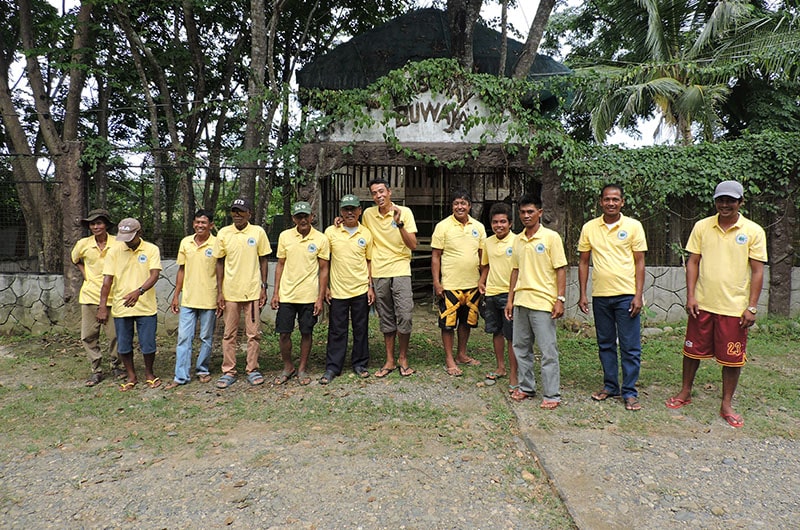
Mabuwaya has trained local community members to take on the role of crocodile sanctuary guards. Mario Sotto Jr is one of the younger guards, who took over the role from his father. His father used to hunt crocodiles, but transitioned into becoming a warden after working with Mabuwaya.
Mabuwaya has trained Mario in bird and herpetology identification skills, and now he gets work doing biodiversity monitoring all over the country with the Philippine government.
A reptile romance
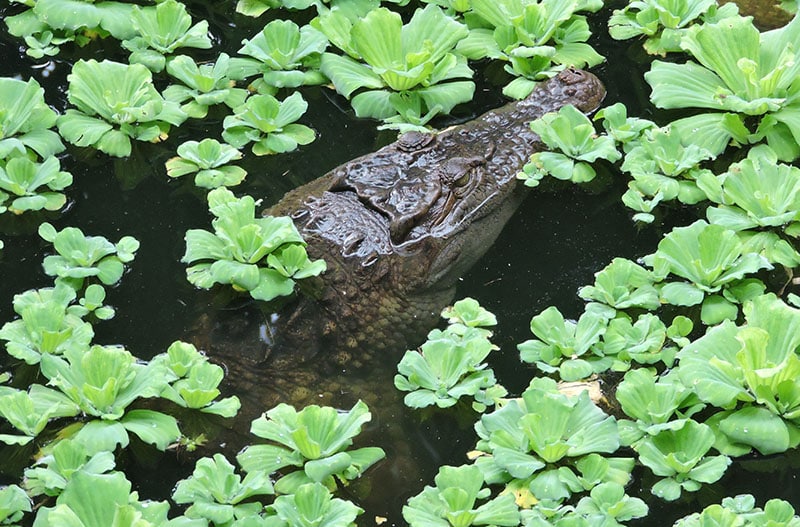
Mabuwaya has two adult crocodiles at the rearing station that are unable to be released as they have injuries. The long-term plan is to breed from these two individuals, but they are awaiting the completion of a new captive breeding centre before starting this process.
In the meantime, they keep the crocodiles in neighbouring enclosures, with a metal fence between them. They are hoping that letting the crocodiles see each other will lead to a successful pairing in their breeding programme. Although they are not overtly affectionate, this approach seems to be working, as during mating season you can often see the two crocodiles sitting next to each other on either side of the fence.
Preparing for release
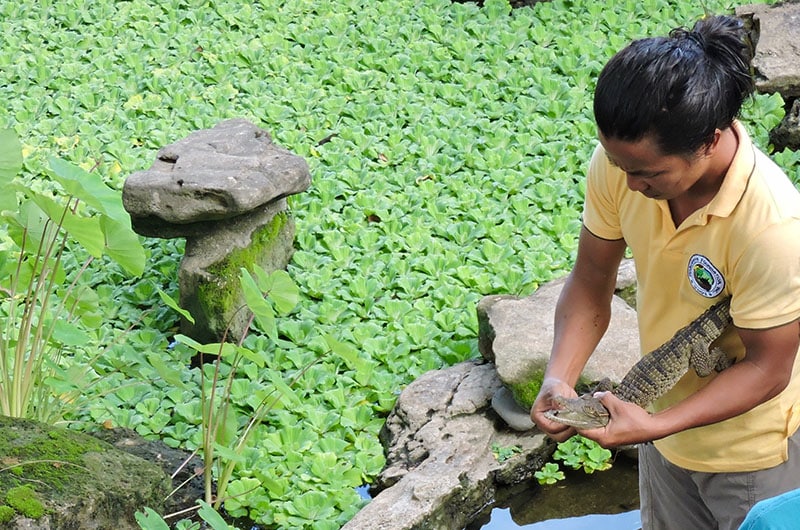
Part of Mabuwaya’s work is to rear newly hatched crocodiles in captivity, then release them back into the wild after two years. This significantly increases their chance of survival from an estimated 5% in the wild to around 80%.
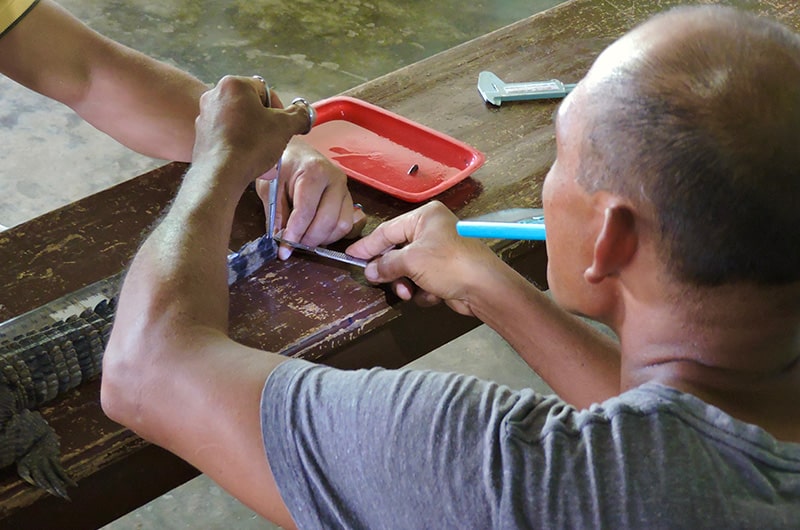
Before releasing a young crocodile into the wild, the team measures the crocodile’s size and weight, and marks it with a special numbering system by removing three small fins along its tail. Depending on which fins are removed, the team is able to identify the individual crocodile if it is caught in the future. This is important for monitoring the success of their release . Once the crocodiles are ready for release, they are placed in an aerated plastic tube for transport to the release site.
“Synchro” swims free
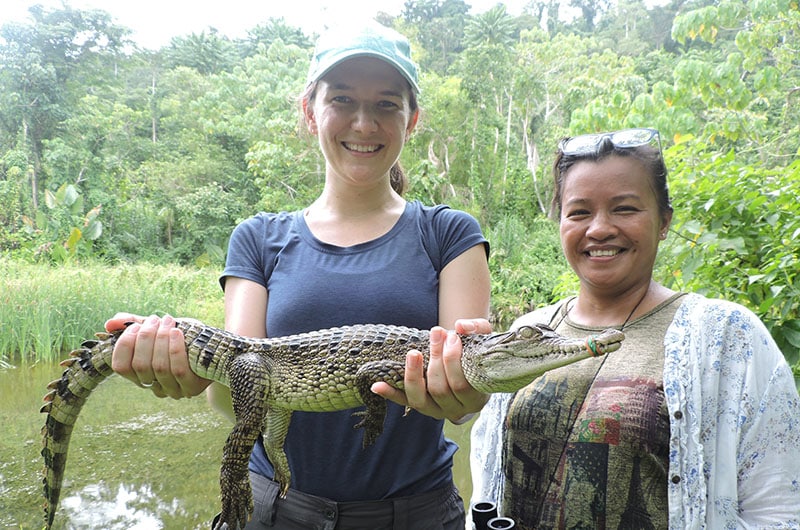
As part of my visit, I had the incredible opportunity to release one of the young crocodiles back into the wild. After a short walk into the forest, we arrived at the release site – a small tranquil lake surrounded by lush green trees and grasses. We decided on the name of “Synchro” for the young male that I would be releasing, and after a few quick pictures he was ready to stretch his legs in the lake. With the help of Bernard, the head of the crocodile programme at Mabuwaya, we quickly lowered him into the water. After a few moments of hissing at us (understandably, he did not realise we were helping him!), he slowly swam away into the shallows. A second crocodile (called “AJ”) was released next, and she behaved quite differently, swimming quickly away and deep into the lake.
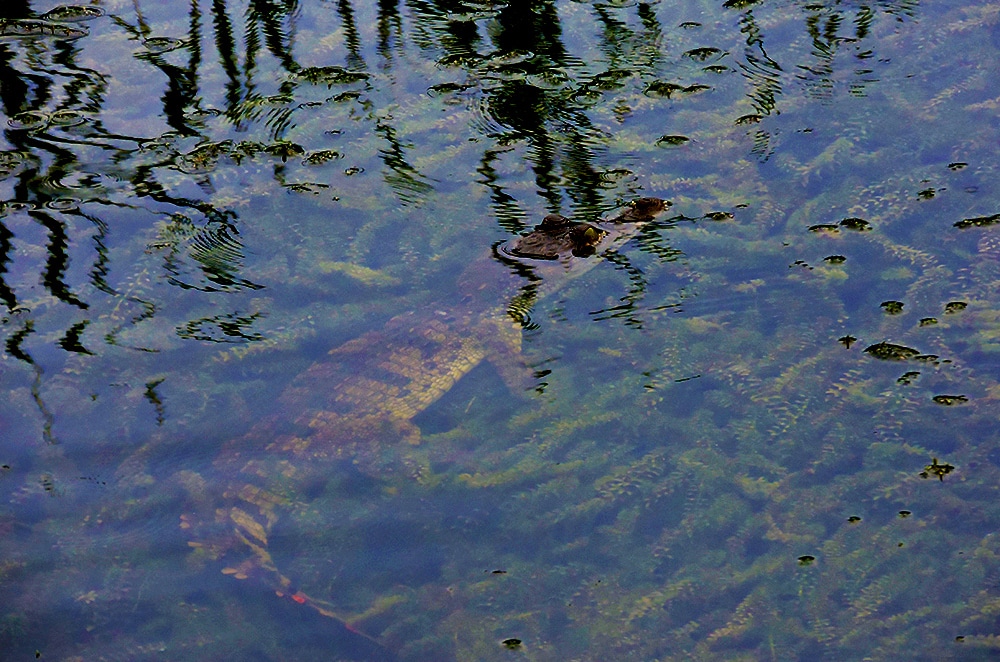
Later that night we came back to the lake as part of a crocodile monitoring session. The methodology for monitoring crocodiles in the wild is to shine a torch along the top of a water body and check for the distinctive red reflected eyes of a crocodile. Sure enough, we spotted two sets of eyes together in the corner of the lake, which we felt sure were Synchro and AJ!
Mabuwaya is an incredible example of the impact that community focused conservation can have. From drastic changes in mindsets to a resurgence of wild crocodiles, these stories are a real reason to be optimistic about conservation.
Synchronicity Earth is providing stable and flexible support to Mabuwaya through our Asian Species Programme. The purpose of the programme is to focus attention on overlooked and highly threated species of Southeast Asia, and support holistic approaches to their conservation. Mabuwaya perfectly encapsulates what can be achieved with this type of approach for both communities and wildlife.
Learn about the other overlooked species that our partners are working to conserve by exploring our Asian Species Programme.


